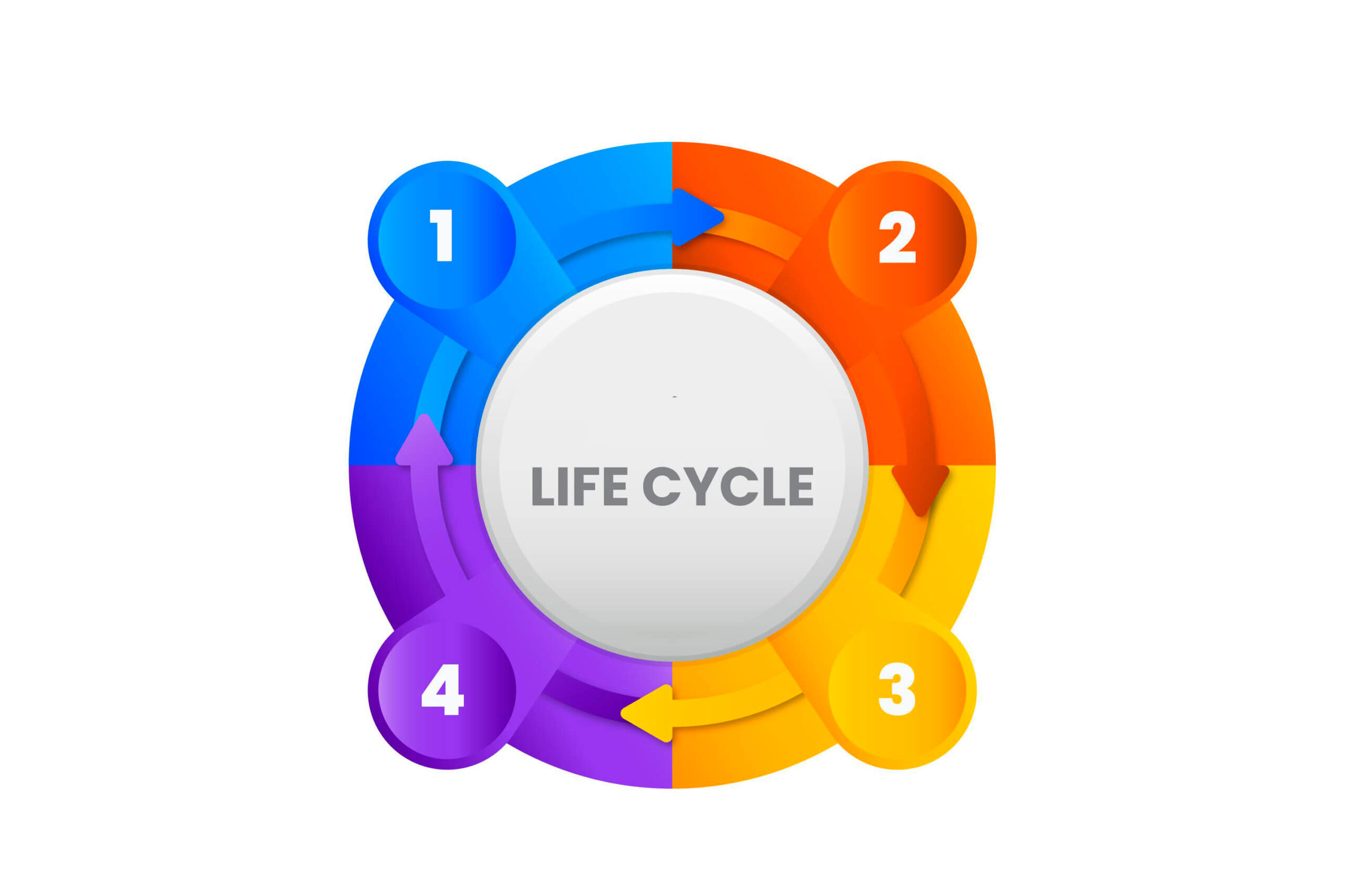Basic Guide to Nonprofit Program Design and Marketing
© Copyright Carter McNamara, MBA, PhD, Authenticity Consulting, LLC, experts in nonprofit program development.
In nonprofits, the product or service that they deliver are often referred to as a “program.” Thus, the guidelines in this topic are somewhat similar to guidelines in the topic Product Development. A nonprofit that is developing a tangible product to generate a profit for the organization (referred to as a Social Enterprise) might benefit from reading the content in that topic.
This topic in the Library guides the reader to design a nonprofit program and services that are highly integrated with the organization’s mission, strategic planning goals and needs of clients. The resulting program plan also serves as a straightforward basis from which to write program proposals to funders and conduct straightforward program evaluations. References to Web addresses with additional free information are provided in most of the following sections.
These addresses are spelled out in the text of this guide. Therefore, the reader might best be served to print out the entire guide for future reference. (The guide is approximately 12 pages long. This document also includes numerous references to the free, online Basic Guide to Program Evaluation .)
Also consider
Related Library Topics
Learn More in the Library’s Blogs Related to Nonprofit Programs and Capacity Building
In addition to the articles on this current page, also see the following blogs that have posts related to Nonprofit Capacity Building. Scan down the blog’s page to see various posts. Also see the section “Recent Blog Posts” in the sidebar of the blog or click on “next” near the bottom of a post in the blog. The blog also links to numerous free related resources.
- Library’s Consulting and Organizational Development Blog
- Library’s Human Resources Blog
- Library’s Leadership Blog
- Library’s Project Management Blog
- Library’s Supervision Blog
TABLE OF CONTENTS
What is a Nonprofit Program?
- Resources and Activities Organized to Provide Related Services
- Program “System”: Inputs, Processes, Outputs and Outcomes
Preparation – Cornerstones to Successful Program Planning
- Program Should Be Closely Aligned with Organization’s Mission
- Program Planning Should Be Closely Aligned With Strategic Planning
- Involve Board Members in Program Planning
- Conduct Program Planning as a Team
- Program Planning Should Involve Potential Clients as Much as Possible
- Don’ Worry About Developing “Perfect” Program Plan
Planning Your Program Framework
- Program Framework: Outcomes, Goals, Strategies and Objectives
- Program Outcomes, Goals and Strategies Follow Directly from Strategic Planning
- Program Outcomes
- Program Goals
- Program Strategies
- Program Objectives
Designing Each Service
- Designing Each Service in Program (Through Market Analysis)
- Draft Basic Description of Each of Your Services
- Target Markets and Customer Profiles
- What Needs Do Your Services Meet for Each Target Market?
- Who Are Your Competitors?
- Who Are Your Collaborators?
- What Price Should You Charge?
- What Laws and Regulations Must You Follow?
- What Name Will You Use for Your Service?
- Protect Your Creations with Copyrights, Trademarks/Servicemarks and/or Patents?
- Finalize Description of Each of Your Services
Planning Program Promotions
- Planning Program Promotions (Advertising, Public Relations and Sales)
- Positioning Your Nonprofit and Its Services — the Positioning Statement
- Sales Planning
- Planning Your Advertising and Promotions
- Public and Media Relations Planning
- Customer Service
Planning Program Delivery and Distribution
Planning Program Evaluation
- Planning Methods to Measure Success of Program
- Building In Key Indicators of Success
- Conducting Initial, Pilot of Program
- Program Reviews
- Evaluation of Plans (Marketing and Promotions, Public and Media Relations and Sales)
- Evaluate Progress Toward Goals and Objectives
- Evaluate Response from Clients
- Program Evaluations
Planning Program Budgeting
WHAT’S A NONPROFIT PROGRAM?
Resources and Activities Organized to Provide Related Services
Basically, a nonprofit program is a highly integrated set of resources and activities geared to provide a service or closely related set of services to clients. The typical nonprofit organizational structure is built around programs. (Two other major aspects of the nonprofit structure are its governance (the board and, for some, the chief executive, too) and its central administration.
The board oversees the entire nonprofit organization. The central administration exists to use the nonprofit’s common resources to ensure each program is developed and operated effectively.)
Programs are not the same as activities!!! Many nonprofits have activities, not programs. The following article describes the difference:
What Nonprofit Programs Are — and Are Not
- For more information now about nonprofit organizations, their structures and nature, see Overview of Nonprofit Organizations
Program “System”: Inputs, Processes, Outputs and Outcomes
Programs, like other organizations, can seem a highly confusing, amorphous mess that is very hard to comprehend. It can be hard to keep perspective. However, like the overall organization itself, a program is a system with inputs, processes, outputs (tangibles) and outcomes (impacts on clients) — with ongoing feedback among these parts. This systems perspective helps keep clarity about programs and will help a great deal during program planning.
Program inputs are the various resources needed to run the program, e.g., money, facilities, clients, program staff, volunteers, etc. The processes are how program services are delivered, e.g., clients are counseled, children are cared for, art is created, association members are supported, etc.
The outputs are the units of service, e.g., number of clients counseled, children cared for, artistic pieces produced, or members in the association. Outcomes are the impacts on the clients who are receiving the
services, e.g., increased mental health, safe and secure development, richer artistic appreciation and perspectives in life, increased effectiveness among members, etc. The outcomes are the “compass” for the program and help it keep its direction. This is why funders are increasingly requesting outcomes-based evaluations from nonprofits.
- For more information now about outcomes-based evaluation, see Program Evaluation.
PREPARATION — CORNERSTONES TO SUCCESSFUL PROGRAM PLANNING
With the following cornerstones in place, the nonprofit is assured of a program plan that has a strong foundation and can survive multiple changes as the program develops.
Program Should Be Closely Aligned with Organization’s Mission
The mission of the organization is its overall purpose in the community. During strategic planning, planners work from the mission to identify several overall, major (or strategic) goals that must be reached and that, in total, work toward the mission. Each program is associated with achieving one or more strategic goals and, therefore, should contribute directly toward the mission as well.
If an idea for a program comes up at some time other than during the strategic planning process, nonprofit board members must carefully ask themselves if the program is really appropriate to the mission of the organization.
Program Planning Should Be Closely Aligned With Strategic Planning
Depending on the nature of the organization, strategic planning typically includes review of the organization’s vision, mission, values, overall issues and goals. Goals associated with services to clients often become program(s) and strategies to reach those goals often become methods of delivering services in the programs.
Because programs must be tied closely to the nature of the organization’s mission and its goals, the program planning process should also be closely aligned to the organization’s strategic planning process
as well. Typically, at a point right after the strategic planning process has identified strategic goals and issues, a team of planners can draft a framework for how strategic goals can be met. This framework is often the roadmap for a new program.
- For more information now about strategic planning, see Strategic Planning
Nonprofits must strive to keep down overhead costs, which are often interpreted as the costs of central administration. Therefore, avoid developing programs to fix recurring administrative problems in the workplace.
Involve Board Members in Program Planning
A major responsibility of board members is to set the strategic direction for their nonprofit. Therefore, board members should be highly involved in the strategic and program planning processes in the nonprofit. However, staff members might be strongly involved in determining how services will actually be delivered in the program.
- For more information now about the roles and responsibilities of board.
Conduct Program Planning as a Team
The chief executive, key planners on the board, relevant middle managers and representatives from major client groups should all be involved in program planning. (“Relevant middle managers” are those who lead programs or other departments that will integrate or coordinate with the new program being planned.)
As mentioned above, program planning is often initiated as part of the organization’s overall strategic planning process and so is often conducted by the strategic planning team.
Program Planning Should Involve Potential Clients as Much as Possible
One can embark on a wonderful program planning process with all the right parts, but if key clients aren’t involved to provide perspectives from the program user’s point of view, the organization may build a beautiful ladder — but on the wrong roof. Therefore, involve clients as much as possible in initial ideas for a program.
Discuss with them your perceptions of their unmet needs. Try verify if these needs actually exist and how they would like their needs to be met. You might have representatives from client groups review the final draft of your program plan. Note that this involvement of clients is a critical aspect of the marketing process, specifically marketing research.
- For more information now about marketing research, see Marketing Research
Don’ Worry About Developing “Perfect” Program Plan
If the organization involves the right people, everyone participates wholeheartedly and continues to reflect on their experiences, then the organization will develop the “perfect” plan for the organization’s programs. The organization remains the only real “expert” on their own planning.
Outside consultants and facilitators can be brought in, but each planning decision is ultimately up to the organization members. The “perfect” program plan will meet the nature and needs of the organization and continue to be updated as organization members learn more about meeting the needs of their clients.
PLANNING YOUR PROGRAM AND SERVICES
Program Framework: Outcomes, Goals, Strategies and Objectives
Basically, planning is taking one’s best shot at working up a “tree” of decisions (decisions that must be made at some time, and the earlier the better) to propose (and often get funding for) developing a program. Your plan doesn’t have to be perfect and, like any plan, it isn’t a rule, rather it’s a set of guidelines that serve as reference for the future.
You can change your plans — just know why and be able to explain (e.g., to your board and funder) why you changed the plans. This planning effort is almost always more than nonprofit personnel want to undertake, but is almost always less than they fear.
Program Outcomes, Goals and Strategies Follow Directly from Strategic Planning
If your strategic planning was done thoroughly then it should be relatively easy to determine program outcomes, goals and strategies. The strategic planning process determines the mission (or purpose) of the organization in terms of uniquely accomplishing certain outcomes for specific groups of clients.
The process also determines the goals needed to work towards the mission and the general methods (or strategies) to reach the goals. As much as possible, goals are specified in terms to meet specific needs among specific groups of clients.
The overall goals of the organization very much determine whom you want to serve, that is, who your target markets will be. For example, strategic goals might be to expand the number of clients you have now, get new clients, get more revenue from current clients, etc.
You may want to develop new services in a current or new market, or expand current services in a current or new market. These examples of strategic goals greatly determine who your target markets will be.
(NOTE: Don’t be overly concerned about completely understanding correct definitions of the terms in this section. As long as your program planning proceeds directly from aspects of your strategic planning, you’ll be headed in the right direction. You might consider goals as measurable accomplishments and objectives as smaller, measurable milestones along the way to the goals. Consider strategies as methods to reach the goals or objectives.)
Program Outcomes
We’ve noted above that intended outcomes are always the compass to point direction for nonprofits and their programs. Outcomes are benefits to clients from participation in the program. Outcomes are usually in terms of enhanced learning (knowledge, perceptions/attitudes or skills) or conditions, for example, increased literacy, self-reliance, certifications, etc. For example:
-
- Example Outcome #1 — Drop-outs from Minneapolis high schools obtain high school diplomas or equivalent levels of certification
- Example Outcome #2 — Within three months after getting certification, participants obtain at least half-time employment or enroll in an accredited program to further their education
Program Goals
Programs goals should follow directly from, or be the same as, strategic service goals intended to meet specific needs of specific client groups. (Note that there are also strategic goals other than for meeting needs of clients, for example, getting a facility.)
Goals should specify the results from program services and be in terms that are “SMARTER” (an acronym), that is, specific, measurable, acceptable to those working to achieve the goals, realistic, timely, extending the capabilities of those working to achieve the goals and rewarding for them, as well.
- Example Program Goal #1: Support at least 600 drop-outs from Minneapolis high schools to obtain diplomas or equivalent levels of certification
Program Strategies
Program strategies (or methods to reach goals) should follow directly from strategies intended to achieve each strategic goal, for example:
- Example Program Strategy 1.1 — Conduct high-school equivalency training programs to drop-outs from Minneapolis high schools
- Example Program Strategy 1.2 — Provide free transportation to enrollees in the program
- Example Program Strategy 1.3 — Provide subsidized child care to enrollees in the program
Program Objectives
Program objectives (or specific, measurable milestones along the way to achieving program goals) are accomplished along the way while implementing the above strategies, for example:
- Example Objective 1.2.1: Provide three vans that will each transport eight riders per day (enrollees and/or their children) to and from the program
Designing Each Service in Program (Through Market Analysis)
Developing program services is not unlike developing products or services in the for-profit market, particularly as nonprofits look to more innovative methods to earn revenue from products and services.
Nonprofit services must be marketed, including clarifying which client groups the nonprofit is going to serve (these are target markets), verifying their needs (a basic form of market research), analyzing competitors (nonprofits do have competitors) and potential collaborators, determining the best fee for services, determining how to produce and distribute the services, and how to promote (advertise, manage public image and sell) the services, as well.
Draft Basic Description of Each of Your Services
Typically, a service is a closely related set of activities that accomplishes a specific benefit for clients. Exactly what determines a service in an organization is highly unique to the organization itself. A program can have several services. A nonprofit might sell services separately and/or in a package of related services. For example, from the above example outcome #1, services might include:
- Example Service for Outcome #1 — High-school training services
- Example Service for Outcome #1 — Transportation services
- Example Service for Outcome #1 — Child-care services
By now, you might have a strong, clear sense of what each of your services are. At this point, you might draft for yourself a written description of each of your services. The description should include: nature of your services (arts, social services, education, etc.), the specific groups of clients served by the service, outcomes for them, other benefits to them and where they should go next if they are interested in using the service. Be careful to describe the services in terms of benefits to clients, not to you. For example, address pricing, convenience, location, quality, service, atmosphere, etc.
What Major Groups of Clients Do You (or Do You Want to) Serve? (Target Markets and Customer Profiles)
This paragraph is repeated from above: The overall goals of the organization very much determine whom you want to serve. For example, strategic goals might be to expand the number of clients you have now, get new clients, get more revenue from current clients, etc.
You may want to develop new services in a current or new market, or expand current services in a current or new market. These examples of strategic goals greatly determine who your target markets will be.
Understanding your program’s target markets makes it much easier for you to ensure that your program remains highly effective. In addition to helping focus the results and evaluation of your services, understanding your target markets helps you to focus on where to promote your services, including advertising, conducting public relations campaigns and selling your services.
If you’ve done a good job so far of strategic planning and program planning, then identifying the primary targets market should be fairly straightforward. However, it is very useful to determine several additional target markets. These additional markets are often where you should focus promotions and mean additional sources of assistance and revenue. For example, a target market that follows from the above examples, might be:
- Target Market #1: Dropouts from Minneapolis high schools
- Target Market #2: Counselors in Minneapolis high schools
- Target Market #3: Parents of drop-outs from Minneapolis schools
- Target Market #4: Job placement services, seeking to help people find jobs
- Target Market #5: Local businesses looking for employees
The more you know about your clients, the better you might be at serving them. At this point, write down a customer profile, or description of the groups of clients (or markets) who will use your services. Consider, for example, their major needs, how they prefer to have their needs met, where they are and where they prefer to have their needs met, and demographic information (their age ranges, family arrangement, education levels, income levels, typical occupations, major interested, etc).
- For more information now about defining your target markets, see How to Identify a Target Market and Prepare a Customer Profile
What Needs Do Your Services Meet for Each Target Market?
By now, you should have a clear idea of the major needs met by each of your services for their primary (or #1) target market. It’s critical that you have a strong sense of the needs that your services are providing to clients. The services should be described in terms that are beneficial to clients — what’s in it for them?
Consider: what needs of theirs are being met, low pricing, convenience, quality, atmosphere, location, etc.
What needs might your services meet among other markets as well? For example, in the above examples:
- Needs Met for Target Market #1: High school graduation, eligibility for the job, and further education
- Needs Met for Target Market #2: Place to refer high school drop-outs so they can continue their education
- Needs Met for Target Market #3: Place to refer their children for continued training, transportation and childcare
- Needs Met for Target Market #4: Place to get clients to find jobs for
- Needs Met for Target Market #5: Place to get job candidates
- Note that identifying the needs of target markets is a major aspect of the marketing process, specifically marketing research. For more information now about marketing research, see Marketing Research
Who Are Your Competitors?
Nonprofits exist to serve their communities. One would think that in this spirit of service, all nonprofits should collaborate for “the common good”. However, nonprofits do compete for the attention, participation and money of their clients — and in many cases, compete for the same items from funders.
Consider the following questions: Who are your competitors? What client needs are you competing to meet? What are the similarities and differences between their products/services and yours? What are the strengths and weaknesses of each of their products and services? How do their prices compare to yours? How are they doing overall?
How do you plan to compete? Offer better quality services? Lower prices? More support? Easier access to services?
- For more information now about competitor analysis
Who Are Your Collaborators?
Successful collaboration brings two or more organizations together to work in synergy, in an effort that is “more than the sum of its parts.” That is, if both organizations worked apart, both would serve clients and produce some benefits — but not as many and as well as if both organizations worked together.
In working together, there’s an economy of scale, or sharing of resources, that lowers costs and focuses more resources on serving clients.
An increasing number of funders are requiring evidence of collaboration planning from nonprofits applying for funding. Many nonprofit leaders naturally struggle with the notion of collaboration, of sharing resources and control with other organizations. Collaboration can be viewed as quite frustrating for nonprofit leaders.
This dilemma invites leaders to carefully consider whom it is that they really want to serve. If collaboration will better serve clients (and it usually will) and better serving clients is the overall goal, then collaboration should be attempted.
In this analysis, consider: Who are potential collaborators with your nonprofit? What client needs might you collaborate to meet? What resources might they bring and what could you bring? What could you do next to cultivate collaboration with other agencies?
- For more information now about organizational alliances
What Price Should You Charge?
Nonprofit typically don’t place the same high priority on setting prices that for-profits do. However, funders won’t support a program indefinitely. The nonprofit is always wise to explore what revenue can be generated from a service to offset its operating costs.
Nonprofits that rely on federal funding would be wise to plan programs that recover costs through the use of fees because the federal government is substantially reducing its contributions to nonprofits.
Several major factors influence the pricing for a service. Strategic goals greatly influence pricing. For example, if the nonprofit really wants to get into a new market, then it might charge lower than usual prices in order to generate more clients who buy the service.
The nonprofit might consider changing pricing if the demand for its services are very high or low. Competitor pricing also has a great effect. If competitors are charging much less, then the nonprofit might do well to lower prices. Similarly, if the competitor is charging much more, then the nonprofit might consider increasing its own prices.
In this pricing analysis, consider: Is your nonprofit recouping your costs (time, money, materials, etc.) to provide it? Is it affordable to clients? Would a sliding-fee scale better? What about volume discounts? What is the competition charging? What should be the new fee(s), if any? How do you know?
- For more information now about Pricing
What Laws and Regulations Must You Follow?
It’s critical to identify all laws and regulations that effect how you carry out your particular services. Contact local state agencies to determine these laws and regulations, for example, offices of your states attorney or attorney general, secretary of state, etc.
What Name Will You Use for Your Service?
To effectively promote your service, you must have a concise, yet meaningful description of the service. This can be much more complicated than merely picking a name. There are consultancies built around helping organizations to name or brand their products and services. You have to be sure that you’re not using a name that is already trademarked or servicemarked.
You should not have a name that closely resembles an already established name in your area, or clients will confuse your services with those referred to by the other name — or, the organization with the other name may choose to sue you. You need a name that makes sense locally, but if you grow, the name will still be understood elsewhere.
The name you choose for your service will be around for a long time and can have substantial impact on your services are perceived. Therefore, seriously consider some basic forms of market research to glean impressions of different names. For example, convene several focus groups to glean their reactions to various names. Have survey cards that clients can complete to suggest names.
- For more information now about Naming and Branding
Protect Your Creations with Copyrights, Trademarks/Servicemarks and/or Patents?
You may want to legally protect the unique combination of ideas, innovations, processes and materials (that is, the “intellectual property”) that produce the products and services of your nonprofit. Communities usually expect nonprofits to operate in the spirit of complete support for the common good of the community.
For some people, this expectation might include that the intellectual property of nonprofits should be owned by everyone in the community, as well. Thus, these people might believe that a nonprofit should not seek to legally own — and/or seek to be reimbursed for duplication of — its products and services.
However, even if a nonprofit does not seek to be paid for duplication of its products and services, the nonprofit should seek to protect the integrity of its products and services, including that their names not be used for other similar products and services and/or that other, poorer quality products and services not be confused with the products and services of the nonprofit.
Therefore, the nonprofit should carefully consider legal protection of its intellectual property. Copyright law protects original “works of authorship”. Patent law protects new inventions and processes. Trademark laws protects words, names and symbols.
- For more information now about Intellectual Property
Finalize Description of Each of Your Services
At this point, you’ve thought — and hopefully learned — more about each of your nonprofit’s services. You’ve learned more about the service’s target markets, benefits to clients, competitors, collaborators, pricing and naming. Now go back to your drafted description of each of your services and update the descriptions with what you’ve learned. Include description of:
1. The business you’re in, for example, service, manufacturing, etc.
2. The type of your service, for example, arts, advocacy, social services, education, civic, cultural, etc.
3. The target market for the service. Include description of the target market.
4. Include your strategies regarding pricing, distribution, advertising and promotion strategies, etc.
Planning Program Promotions (Advertising, Public Relations and Sales)
Promotion keeps your service in the minds of your clients and helps stimulate demand for your services. Promotion involves ongoing advertising, public and media relations, and can include sales and customer service. All of these build from having a clear idea of how you want position your nonprofit and its services in the target markets (or groups of clients) that you are aiming to serve.
Positioning Your Nonprofit and Its Services — the Positioning Statement
Simply put, positioning is determining how you want others to perceive your nonprofit and/or each of its services. Positioning builds from many of the above-mentioned activities, including clarifying target markets, which of their needs your services meet, how your services uniquely meets these needs, the price of services, how your nonprofit “stands up against” competitors, and the unique name of your services.
Your market position can be described by your positioning statement. Advertising and promotions often work from this positioning statement. This statement usually includes two to five sentences, but should be very brief and concise. It should clearly depict your organization in the way that you want others to perceive it. When writing it down, consider answers to the question: “We are the nonprofit that …”
- For more information now about Positioning
Sales Planning
Sales can be a strong component of your advertising and promotions activities. In addition, the budget for advertising and promotions is often determined as a percentage of the revenue expected from sales. Therefore, we’ll look at sales at this point in the advertising and promotions information.
Sales involves most or many of the following activities, including cultivating prospective buyers (or leads) in a market segment; conveying the features, advantages and benefits of a service to the lead; and closing the sale (or coming to agreement on pricing and services). Sales forecasts (or projections about sales accomplished in terms of money made, units sold, etc.) are often used as the basis for determining how much to budget for advertising and promotions and for public relations efforts. Sales forecasts are often made on the basis of market research about the market and industry.
Unfortunately, many people in nonprofits have strong feelings against sales. They perceive sales as heavy-handed and manipulative efforts to force someone to do something that they really don’t want to do.
However, sales is evolving from this old-fashioned, heavy-handed approach to more relationship-based approaches geared toward identifying the needs of clients and helping clients decide if the services meet those needs. If a person really believes strongly in their services, then sales can be very meaningful experience. It’s often wise to send personnel to basic forms of sales training. This can make a big difference.
The best sales techniques usually include strong skills in questioning and listening. Good sales techniques also include ensuring strong methods of customer service — current customers are often the best sources of customers for new products and services. Probably the best approach to ensuring strong sales is knowing the needs of clients — this starts with effective market research.
Regarding your sales planning, consider: What target markets will be approached? How will you conduct sales efforts with them? How much do you expect to accomplish in sales (consider terms of outputs, such as dollars made, clients recruited, or other units of service). How do you generate sales contacts and potential customers (or leads) among each target group? Who does follow-up and presentations? Who actually closes the sale? How will you know if your sales efforts are effective?
- For more information now, see Sales Basics
- For more information now, see Customer Service
- For more information now, see Questioning
- For more information now, see Listening
Planning Your Advertising and Promotions
Advertising and promotions is continuing to bring a service to the attention of potential and current customers. Advertising and promotions are best carried out by implementing an overall advertising and promotions plan. The plan often includes plans for a promotional campaign, including an advertising calendar and media plan.
The goals of the plans should depend very much on the overall goals and strategies of the organization, and the results of the marketing analysis, including the positioning statement. Successful advertising and promotions depends very much on knowing what target markets you want to reach, what features and benefits you want to convey to each of them, what methods and media you will use to convey it to them, who is responsible to implement the methods and how much money is budgeted for this effort.
When selecting methods, consider what communications methods and media will be most effective in reaching target markets and when. Consider, for example, radio, newsletters, classifieds, displays/signs, posters, word of mouth, press releases, direct mail, special events, brochures, neighborhood newsletters, etc. What media is most practical for you to use in terms of access and affordability? You can often find out a lot about your clients preferences just by conducting some basic market research methods.
- For more information now, see Basic Methods to Get Customer Feedback
- For more information now, see Major Methods of Advertising and Promotion
- For more information now, see Planning your Advertising
Public and Media Relations Planning
Public and media relations includes ongoing activities to ensure the nonprofit has a strong public image. Public relations activities include helping the public to understand the nonprofit and its services. Similar to effective advertising and promotions, effective public relations often depends on designing and implementing a well-designed public relations plan.
The plan often includes description of what you want to convey to whom, methods to convey it, who is responsible for implementing the methods and how much money is budgeted to fund these activities. Similar to advertising and promotions planning, a media plan and advertising calendar can be very useful in a public relations plan, as well.
Often, public relations are conducted through the media, that is, newspapers, television, magazines, etc. Publicity is mention in the media. Organizations usually have little control over the message in the media, at least, not as much as they do in advertising. Regarding publicity, reporters and writers decide what will be said.
Regarding public relations, consider: What groups of stakeholders do we want to appeal to and how? What impressions do you want each of your stakeholder to have? What communications media do they see or prefer the most? Consider advertising, collaborations, annual reports, networking, TV, radio, newsletters, classifieds, displays/signs, posters, word of mouth, direct mail, special events, brochures, neighborhood newsletters, etc. What media is most practical for you to use in terms of access and affordability? What messages are most appealing to each stakeholder group?
- For more information now, see Major Methods of Advertising and Promotion
- For more information now, see Public Relations
Regarding media relations, consider: Who in your organization should respond to calls from newspaper reporters, etc? What should organization members say to the reporters? Do you have a script that your organization can reference to represent the organization to the community? Do you have guidelines for writing press releases and are these guidelines used?
- For more information now, see Managing Media Relations
- For more information now, see Major Methods of Advertising and Promotion
Customer Service
The for-profit arena has seen dramatic improvements in customer service as customers become more discerning in their selection of products and services (clients of nonprofit organizations are also customers of the organization). Organizations are realizing that the best source of customers for new products and services are current customers — if their needs are being met.
As with many other areas in this guide, the place to start when understanding customer service may be some basic methods of market research.
When considering how you will ensure strong “customer” services, consider: Are clients very satisfied with your services? How do you know? If not, what can you do to improve customer service? How can you do that? What policies and procedures are needed to ensure strong customer service. Include training in your considerations, including skills in interpersonal relations, such as questioning, listening, handling difficult people, handling interpersonal conflicts, negotiating.
- For more information now about Customer Service
- For more information now, see Basic Methods to Get Customer Feedback
- For more information now, see Questioning
- For more information now, see Listening
- For more information now, see Handling Interpersonal Conflict
- For more information now, see Handling Difficult People
- For more information now, see Negotiating
Planning Service Delivery Methods
These methods are primarily in regard to building and reproducing the service (producing it), and then bringing the particular target market and service together (distributing the service). How your nonprofit produces and distributes services depends very much on the nature and needs of your organization and services. However, there are some common questions you should address in your planning.
Producing Each Service
If your program planning and marketing is successful, then hopefully you can expect an increase in demand for your services. You consider the following questions: What resources are needed to build the service? What resources are needed to reproduce the service (that is, provide it multiple times)? How will you meet expected demand for the services over the next six months? Twelve months? Eighteen months?
Note that the development and implementation of various production methods do not have to be addressed in detail in a marketing plan — these topics are usually included in the operations or management planning for the program. However, production should be generally considered during the marketing analysis to ensure the eventual detailed production planning takes into consideration the needs of target markets and having their needs met on time.
Distributing Each Service
Matters of distribution of service can be critical for nonprofits, especially if they are providing critically needed services to specific groups of clients. For example, low-income clients may not be able to afford transportation to other areas to receive your services.
Carefully consider: What distribution channels should you consider, for example, should clients come to your facility, you visit their offices, can you provide services over the telephone, etc? What resources are needed to bring together your services and your target markets? What major steps need to occur to accomplish these distribution channels?
Note that detailed planning about developing and maintaining distribution channels is often included in the operations or management plans, rather than in the marketing plan. However, the marketing analysis should focus on selecting the methods of distribution that best meet the needs of target markets and the nonprofit.
- For more information now about Distribution
Planning Methods to Measure Success of Program
The best indicator of the success of a program is clear, continued evidence that its services are meeting the previously unmet needs of its clients. To clearly conclude this success of a program, you need to clear indicators of success.
Building In Key Indicators of Success
It’s important during program planning to build in clear indicators of the success of the program. For example, consider establishing indicators that are associated with outcomes intended from the program, such as “increased self-reliance (an outcome) for 70% of adult, African American women living in the inner city of Minneapolis as evidenced by the following measures (indicators) …”
An outcomes-based evaluation will help you ascertain if you’ve reached this indicator or not. You can also resort to indicators in terms of outputs (tangible results), for example, the number of clients served, money made, milestones accomplished, measures of satisfaction among clients per questionnaires, etc.
Note that measures of outputs are very weak indicators of the success of achieving outcomes. As a result, many evaluators and funders will assert that more valid measures toward outcomes must be used.
If you struggle with identifying key indicators of success, then imagine the program operating in a highly successful manner at some time in the future. Then describe what features of the program indicate that the program is successful.
- For more information now about program evaluations, their planning and how to carry them out, see Program Evaluation
Conducting Initial, Pilot of Program
Consider planning a six-month or one-year pilot effort. The pilot will be a sort of mini-program that will reflect many of the aspects of a full-blown program. However, planning and operations regarding the pilot will include numerous reviews and assessments from which to learn from experiences around the pilot program.
This learning will go into planning for the full-blown program. Note that funders are often highly cooperative in funding pilots as an approach to research or verify the nonprofit’s proposed plans.
Program Reviews
Program reviews are regular examination of the program’s activities to assess how the program is doing. A program review team should probably include the chief executive, the head of the new program and one or two other program directors, particularly those from programs that closely coordinate with the new program.
A board planner should be involved, if possible. Examine if the program seems to be following the original plan. If it’s not, the deviation is not as important as understanding why and assessing if the
deviation was necessary.
Take a look at the key indicators as noted in the plan. What is the progress toward the key indicators? What major problems exist and what is needed to address them? How are the actual costs compared to the planned costs? Are any actions needed to avoid financial problems? What would you do differently about the program if you could do anything? What limitations are holding you back from what you would ideally do if you could? What are you learning from the program implementation so far?
Evaluation of Plans (Marketing and Promotions, Public and Media Relations and Sales)
One of the most effective ways to ensure the success of your program is by evaluating the implementation of the plan. The plans are not law — they’re a set of guidelines and controls. If the plans needs to be changed, then fine — but know why they need to be changed and how.
Evaluate Progress Toward Goals and Objectives
1. Are goals and objectives being achieved or not? If they are, then acknowledge, reward and communicate the progress. If not, then consider the following questions.
2. Will the goals be achieved according to the timelines specified in the plan? If not, then why?
3. Should the deadlines for completion be changed (be careful about making these changes — know why efforts are behind schedule before times are changed)?
4. Do personnel have adequate resources (money, equipment, facilities, training, etc.) to achieve the goals?
5. Are the goals and objectives still realistic?
6. Should priorities be changed to put more focus on achieving the goals?
7. Should the goals be changed (be careful about making these changes — know why efforts are not achieving the goals before changing the goals)?
8. What can be learned from our monitoring and evaluation in order to improve future planning activities and also to improve future monitoring and evaluation efforts?
Evaluate Response from Clients
For example, consider:
1. Did customers respond to advertising and promotions?
2. Did stakeholders respond with positive impression of the agency?
3. Did customers respond stronger than expected in certain areas?
4. What media seemed to generate the most responses?
5. What else can be learned about how clients are responding to the marketing efforts?
Program Evaluations
Programs should be evaluated on a regular basis to discern if the programs are reaching their goals, achieving their outcomes and if they are doing so in an efficient manner. Small nonprofits seldom have the resources to conduct comprehensive, detailed evaluations of a program’s goals, outcomes and process.
However, personnel from small nonprofits can think about where they have the most concerns about a particular program or aspect of a program (goals, processes, outcomes, etc.) and then target a highly practical evaluation of that particular aspect of the program.
Program evaluation holds numerous advantages. It can verify or increase the impact (or outcomes) on constituents. It can fine tune delivery of program services, which, in turn, saves costs and time. Evaluations often provide wonderful client testimonials that can be used for public relations and credibility when applying for funding.
In fact, evaluations are often used by program planners to ensure that the program is indeed carrying out the original process planned for the program in the first place. Often, nonprofit leaders develop a program plan which ends up changing dramatically over time as program staff are overcome by events.
Program processes can naturally deviate from the original plan because program plans were flawed in the first place, the program’s environment changed a great deal or program staff simply found a much better way to deliver services to clients.
- For more information now about program evaluations, their planning and how to carry them out, see Program Evaluation
Resourcing and Budgeting for Program Development
Program Resources and Budget
Examine the program’s process to the extent that you can associate what resources are needed to carry out that process. Consider: personnel costs (salaries and wages, fringe benefits, consultants), training, space, equipment purchase or rental, travel, copier, telephone, general office supplies, etc.
Develop a program budget by estimating the cost for each resource identified above. Note that this budgeting activity is almost always required in a proposal if the nonprofit wants to pursue funding for the new program.
For additional information now about Developing a Budget
For the Category of Program Management:
To round out your knowledge of this Library topic, you may want to review some related topics, available from the link below. Each of the related topics includes free, online resources.
Also, scan the Recommended Books listed below. They have been selected for their relevance and highly practical nature.











